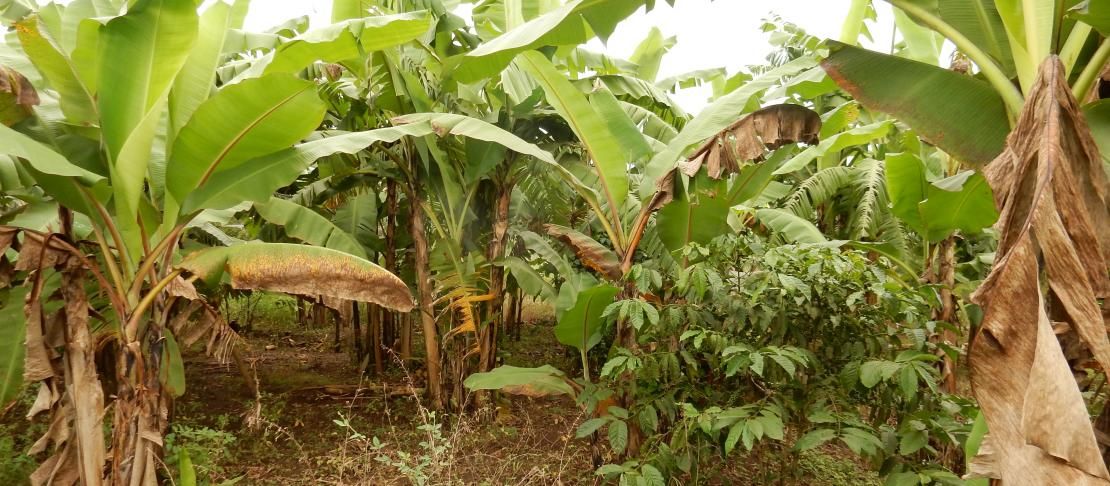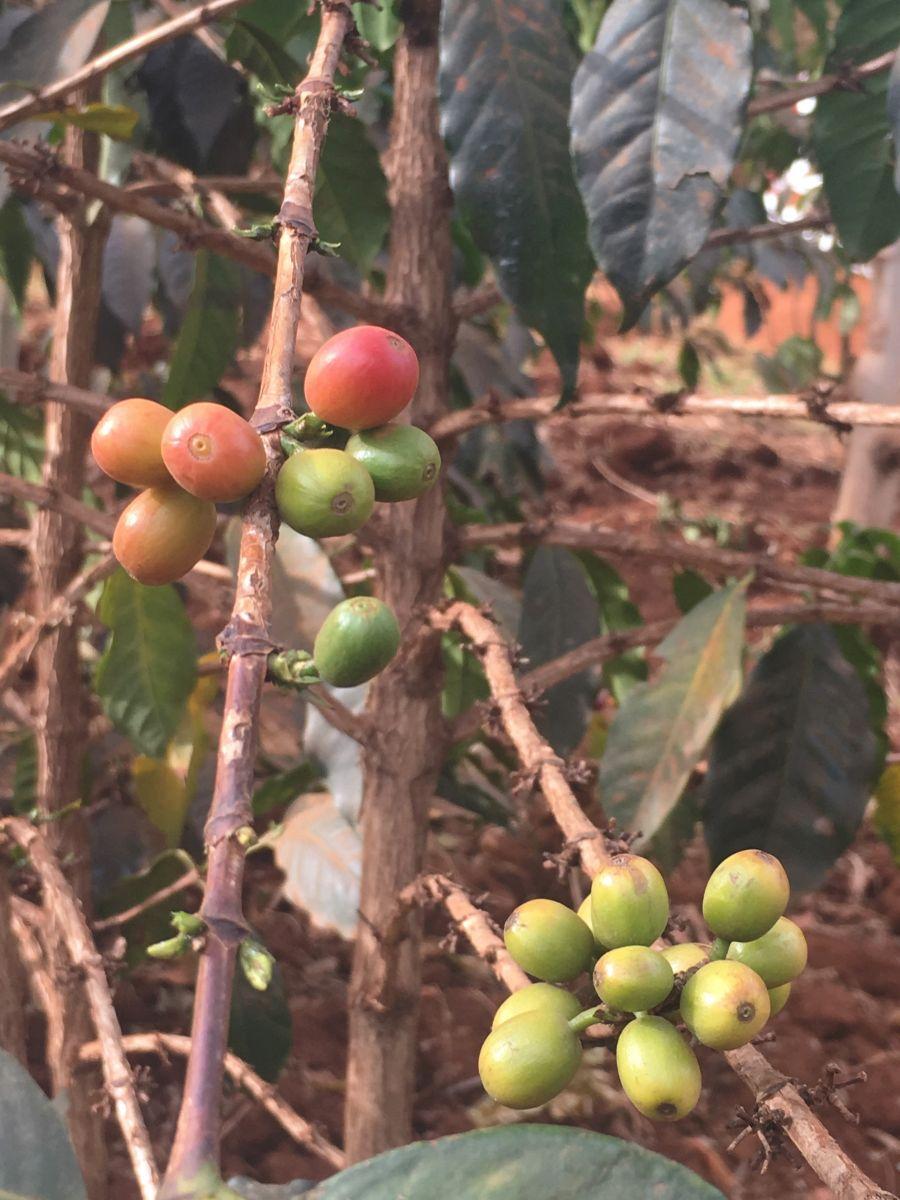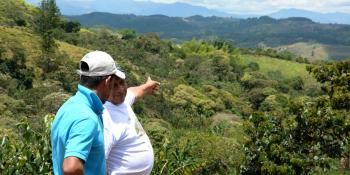Sipping coffee in a shady garden: coping with increasing temperatures in coffee production systems

New online database tool provides advice on best trees to use for shade-grown coffee based on local knowledge and taking into consideration the farmers needs for ecosystem services
As we arrived at our destination, a coffee farm in Uganda, we climbed out of the car and the heat was overwhelming. Even the coffee farmer who greeted us, said "it is like stepping into an oven!". Such high heat is detrimental to the Arabica coffee he is growing because it is better suited to cooler climes. Research has shown that a way of controlling the heat is to plant shade trees within the coffee garden. Although agroforestry has broadly been accepted by the coffee sector as a sustainable production system, the questions often arises on which tree or groups of trees is suited for which context. The International Institute for Tropical Agriculture (IITA) and partners in Uganda and Ghana have developed a Shade Tree Advice Tool that can help advise farmers on which trees to plant that fit their specific needs.
The changing climate is already impacting coffee production globally, and the predicted increase in temperature and increasingly erratic rainfall patterns are projected to change the suitable areas for coffee globally. The planting of shade trees can help control the microclimate in a coffee garden while at the same time providing a variety of other ecosystems services, such as firewood, timber, and food products.
Although shade trees do sound like an ideal solution, there are also challenges that arise from planting them. One such challenge is that some shade trees increase the incidences of pests and diseases in certain conditions. Choosing which shade trees to grow is thus not as simple as it seems. The considerations that influence the choice of shade trees involve both the other environmental services the shade tree needs to provide, and whether or not that specific species will not cause more harm than good. The Shade Tree Advice tool consolidates both scientific and farmer knowledge to help farmers identify trees that fit closely to their specific needs and to help them choose which trees to plant.

Arabica coffee cherries in the higher reaches of Mt. Elgon in Greater Mbale, Eastern Uganda. Photo: O. Giller (IITA)
The farmer quoted above lives and farms on the lower reaches of Mt. Elgon in Eastern Uganda, where the effects of increasing temperature are worse than higher up the mountain. The Greater Mbale District, which encompasses a large part of Mt. Elgon, was the site of the pilot study that developed the first prototype of the Shade Tree Advice tool. The first step in building a database of shade trees in the region was to do an on-farm inventory of the shade trees present on 50 farms in the low, middle and high altitude zones, respectively. The second step was to survey 100 farms in each altitude, in which farmers first ranked various tree-based environmental services by preference, and then ranked shade trees in their ability to provide these environmental services. As such, a database is built based on local use and knowledge of shade trees, which can give advice to farmers at specific altitudes and to their own specific needs.
A prototype of the Shade Tree Advice Tool has been built and is currently in website form. It can be found at http://www.shadetreeadvice.org/. The database is uploaded to the tool, and the tool gives the user the ability to access the information in an easy-to-use way, without having to scroll through the raw data. The user, either the farmer himself or an intermediary such as an agricultural extension agent, can choose the country, region, crop and subzone that fits their criteria. Then they have the ability to choose environmental services they are interested in, as well as how important each environmental service is they have chosen. The tool then displays the shade trees that best fit the criteria, and the user has the option of learning more about the best shade trees that are being advised.
As the tool is only a prototype at this stage, work is being done to refine it, and an offline app is also envisioned to make it more readily accessible to farmers and remotely based extension agents. The tool is also not specific to just Arabica or even just coffee. The process was also completed for Robusta coffee in the Greater Luweero District of Uganda, where different rainfall gradients were used. Outside of Uganda, studies were done on Arabica coffee along altitudinal zones in China, and among cocoa farms along rainfall gradients in Ghana.
Although shade trees are a key practice in adapting to climate change in select perennial agroforestry systems, there has so far not been an easy way to give advice on the best trees to plant. This tool fills a gap, and with continued work to build the database, it can help advise farmers on how to choose appropriate shade trees around the globe.
Further reading
Download the accompanying CCAFS Info Note on the Shade Tree Advice tool for more information.
If you are interested to learn more about the methodology or have any further questions, please contact Laurence Jassogne (L.Jassogne@cgiar.org).
Onno Giller is an Environmental Anthropologist and Scaling and Innovations Specialist at IITA and a PhD candidate at Wageningen University.



